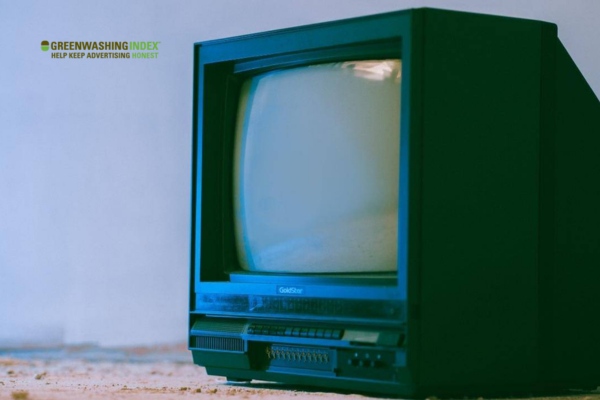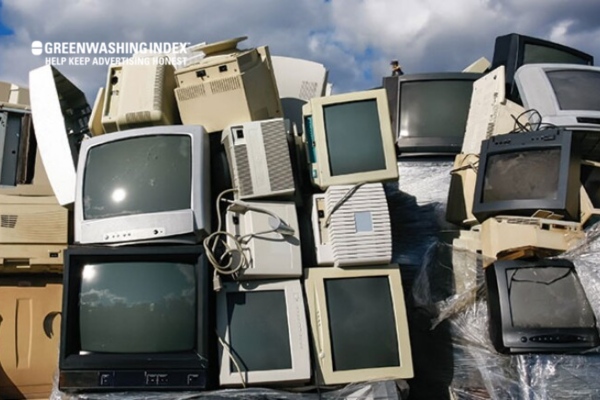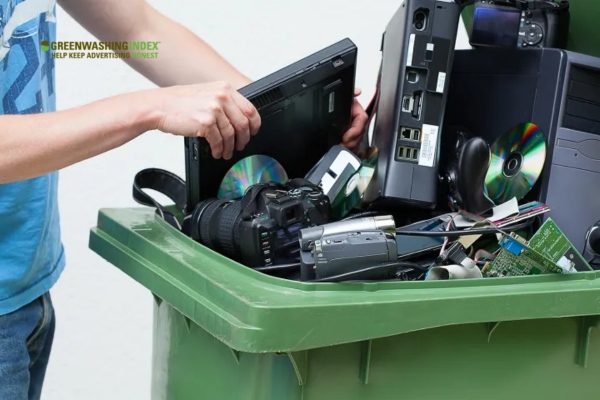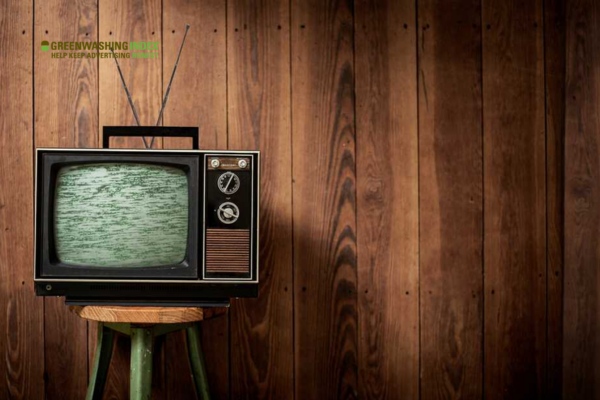Have you ever wondered what happens to your old television when it’s time to say goodbye? Every year, millions of TVs reach the end of their life, and with technology advancing rapidly, that number is only growing.
What you do with your outdated or broken set can make a huge difference for our planet. If you care about the Earth like I do, TV recycling is a topic you’ll want to hear more about. Keep reading—I promise it’s worth your while!
You might not know this, but eco-friendly TV disposal isn’t just about being kind to the earth, it’s essential. TVs contain materials that can harm the environment if they’re tossed in the trash. But when recycled properly, we can recover precious metals and reduce harmful waste.
That’s why choosing sustainable electronics recycling practices for your old television matters so much.
The Need for Eco-Friendly TV Recycling
As we move forward in this modern world, we buy more and more TVs. They get old or break, and then we have to throw them away. But just throwing them out is not a good idea. You see, TVs have stuff inside them that can hurt our planet if we don’t take care of them right when they’re no longer needed. That’s why TV recycling is so important.
When a TV reaches the end of its life, it can’t just be left to sit in a pile of trash. Here’s why:
- Dangerous Chemicals: Inside every TV, there are things like lead, mercury, and other bad chemicals that should never end up in the ground or water.
- Precious Materials: TVs also have valuable bits like copper and aluminum which can be used again instead of digging up more from the earth.
- E-Waste Problem: We’re making too much electronic waste (e-waste) by tossing electronics out with the regular trash.
- Space Issues: Throwing away loads of TVs takes up lots of room in landfills that could be used for other trash that can’t be recycled.
- Harms Nature: If those harmful chemicals leak into the land and water, plants and animals get sick or die.
So when I say we need eco-friendly disposal for these old TVs, I mean finding ways to take apart these devices carefully so all the different parts can be dealt with correctly without hurting our earth.
The Role of Consumers in Electronic Waste Management
Now let me tell you about what you — yes, you — can do to help:
- Choose Wisely: When buying a new TV or electronic device think about how it will be thrown away when it gets old.
- Reuse: Maybe someone else would want your old TV? Could it go to a friend or charity?
- Local Recycling Programs: Find out if your town has special days for electronics recycling.
- Certified Recyclers: Make sure you’re giving your old TV to certified recyclers who know exactly how to take it apart safely.
- Remember: By being careful with how we throw away our electronics like TVs, each one of us makes a big difference in keeping our planet clean and safe.
So here is what comes down to: TV recycling isn’t hard but super important for eco-friendly disposal! It’s up to us all – yes every one of us – to make sure when saying goodbye to an old screen buddy; we do it in a way that loves our earth back as much as binge-watching did!
Also Read: Light Bulb Recycling: Essential Steps to Save the Planet
Understanding TV Recycling Regulations
When I talk about TV recycling, it is essential to understand the rules that tell us how to dispose of old TVs. There are laws made by governments that guide us on how to get rid of electronics without harming our environment. Let me explain these regulations so you can know what they mean for you and your old TV.
What You Should Know About Electronics Disposal Laws?
Different places have different rules about electronics disposal, and this includes TVs. These laws aim to stop harmful materials from getting into the ground and water when we throw away old electronic devices. Here’s what you should keep in mind:
- First, check if there is a law banning electronics from landfills in your area. Many regions do not allow you to throw away your TV in regular trash.
- There might be a recycling fee when you buy a new electronic device; this fee covers the cost of safe disposal later.
- Some areas have rules on recycling certain parts of a TV, like screens or batteries because they contain dangerous substances.
- You’ll also find certified recycling centers, which follow strict standards for safe TV recycling.
By knowing these laws, we can make sure that our old TVs are disposed of in ways that don’t hurt Mother Nature.
How to Comply with E-Waste Guidelines?
To follow the e-waste guidelines properly, here’s a step-by-step way to make sure you’re doing everything right when recycling your television:
- Find out about local e-waste laws by reaching out to environmental agencies or looking online at government websites.
- Look up certified eco-friendly disposal locations nearby where these centers safely handle e-waste.
- If there’s a home pick-up service available for large items like TVs, see if this option works best for you.
- In some cases, stores where you buy new electronics will take back your old ones; ask them if they offer such services.
- Always remove all personal data from smart TVs before disposal because privacy matters even after saying goodbye.
Taking part in eco-friendly disposal keeps harmful stuff out of landfills and recycles valuable materials found inside our old televisions.
Also Read: How To Recycle Smartphones: A Guide To Green Tech Habits
Preparing Your TV for Recycling
When it comes time to say goodbye to your old TV, recycling it the right way is important for our Earth. I want to share some simple steps with you to prepare your TV for recycling. Taking these steps can help make sure that your TV does not hurt the environment.
Sorting and Cleaning Up Beforehand
Before you recycle your TV, here’s what you should do:
- Check if it still works: If your TV is still good, think about giving it away or selling it instead of recycling it.
- Take off accessories: Remove items like remotes, cords, or any stands that might come with the TV.
- Clean up: Wipe down your TV with a soft cloth to get rid of dust.
- Personal information: If your TV is smart and connects to the internet, go into its settings and clear out any personal info you put there like accounts or Wi-Fi details.
- Pack it right: If you have it, place the TV back in its original box with foam or wrap it in bubble wrap to keep it safe during transport.
Doing this makes sure that all parts of the TV are ready for recycling and do not leak out anything harmful when they start taking apart the television.
Identifying Recyclable Parts
Now let’s talk about which bits of a television can be recycled and why they matter so much:
- Plastic casing: The body of the TV usually has lots of plastic which can be melted down and used again for other products.
- Metal parts: There’s metal inside that can be taken out and recycled; these metals could be steel, aluminum, or copper.
- Glass screen: Some older TVs have screens made from glass which can be taken apart and used again.
- Circuit boards: Inside there are boards with tiny parts; these hold valuable materials like gold or silver that are super important not to waste.
- Wires & cables: All those wires have copper inside them which is great for using over again in new things.
Remembering these parts helps us see why breaking down TVs without hurting nature is so vital; each part we reuse means less stuff we need from our planet which keeps it green and healthy!
By following these steps carefully before recycling your television set, not only do you help protect nature but also give some of its parts a second chance at life—which is pretty cool if you ask me!
Also Read: CRT Monitors Recycling Guide: Save Earth, Start Today!
Locating Eco-Friendly Disposal Solutions
When I look for a way to chuck out my old TV the right way, making sure it doesn’t harm the earth is tops on my list. That’s all about being eco-friendly. It means giving the TV a new purpose or breaking it down safely. But how do I find where to take my TV? Here’s what I do:
Finding Your Nearest Electronics Recycler or Drop-off Location
Locating a spot near me that deals with TV recycling can take some digging. But, here’s a nifty guide on how to track one down:
- Hit Up the Web: A quick search online for “TV recycling near me” usually turns up some good options. I look for well-known places that focus on being green.
- Local Government Resources: My town hall or city website often has info on this stuff. They list out where the closest e-waste centers are.
- App Time: There are apps available now that tell you where you can recycle your electronics simply by typing in your ZIP code.
- Ask Around at Community Centers: These places are all about helping out and will likely have information on local recycling programs.
- Keep an Eye Out for Events: Sometimes, there’s a special day set aside in my community just to get rid of electronics responsibly.
- Environmental Group Websites: Groups fighting to keep our planet clean usually have lists of approved recyclers.
Following these steps makes finding an eco-friendly disposal solution pretty straightforward and keeps things nice and simple just like Mother Nature likes!
Retailer Take-Back Programs
Now let’s chat about store take-back schemes – retailers that sell TVs might also help chuck them out when they’re no longer working:
- Big Box Stores: Bigger shops sometimes accept old sets when buying a new one from them.
- Electronic Brand Stores: Brands selling TVs often run programs where they’ll take back their own products once they’ve kicked the bucket.
- Search Store Policies Online: Not everywhere makes it clear, but with some online snooping around, I find out which stores offer this service.
- Customer Service Desks Are Key! If unsure, head straight to the helpdesk in-store and ask away – they should know if there’s a program in place.
- Spot It On Your Receipt: Sometimes, when buying a TV, info about disposal is printed right at the bottom of the receipt.
This approach not only gets rid of my old set but sometimes there are perks like discounts offered towards freshening up my living room with new tech—at least while being kind to our earth!
In both methods—recycling locally or going through retailer programs—it’s all wrapped up in doing better for our planet and setting the stage for sustainable electronics recycling moving forward!
Also Read: Monitor Recycling: Your Ultimate Easy Guide Today!
Alternatives To Disposal – Giving Your Old TV A Second Life
When I think about TV recycling, I look beyond just getting rid of the old set. If my TV still works, I consider giving it a second life before tossing it out. This is where donating my functional television comes into the picture. It’s not only an eco-friendly disposal method, but it also helps someone else out.
Donation Options for Functional Televisions
Explore charitable organizations that accept working used TVs.
There are many places that are more than happy to take in a working television. Here is a detailed list of some options:
- Local schools: Many schools can use functioning TVs for educational purposes, like showing educational videos or as displays for presentations.
- Community centers: Community centers often need TVs for events and activities they organize for residents.
- Shelters: Places like homeless shelters or domestic violence shelters appreciate having TVs as a form of entertainment or relaxation for people they support.
- Thrift stores: Stores such as Goodwill or the Salvation Army sell donated items to fund their programs, so donating there could also aid their cause.
- Non-profit organizations: Look up non-profits in your area that might have programs needing TV donations.
Before I go through with donations though, I make sure to check each organization’s rules—some may have strict guidelines about what types and sizes of TVs they’ll take.
Upcycling Ideas For Non-working Televisions
Creative ways to repurpose old televisions that cannot be donated.
Not all televisions are lucky enough to find a new home—especially if they’re no longer working right—but there’s still hope! Upcycling is like giving your TV an exciting new purpose rather than throwing it away.
Here are some detailed ways I can get creative with upcycling:
- Make a retro-fish tank: With some work, gutting an old CRT TV and waterproofing the inside can turn it into a quirky fish tank!
- Create storage space: Removing the electronics leaves me with a neat boxy frame perfect for shelving books or displaying collectibles.
- Transform into art: Some artistic folks may use the shell and screen of an old TV as canvas and frames for modern art pieces.
- Convert into furniture: Believe it or not, sturdy old TV cases can become unique side tables or even pet beds!
Each one of these upcycling ideas adds value back into something that would otherwise be discarded—a win for both creativity and sustainability!
Also Read: Paint Recycling: The Ultimate Guide to Responsible Disposal
Safe Transport Options For Your Old Television
When I decide it’s time to recycle my old TV, I want to make sure I do it the right way. One important part is how I pack and move it. After all, if we want to be good to our planet, every step counts.
Eco-Friendly Packing and Transportation Methods
Firstly, when getting ready to move my TV for recycling, I use materials that don’t hurt the environment. Here are some of my best tips:
- Use Recycled Boxes: Instead of buying new boxes, I look for used ones that are still in good shape. Stores often have boxes they don’t need anymore.
- Old Newspapers and Magazines: Bubble wrap is handy but not very eco-friendly. So, what can we use instead? Well, old newspapers and magazines! They work just as well for wrapping around the TV to protect it.
- Reusable Cloth Covers: If you have an old blanket or sheets at home, these can act as a protective layer around your TV as well.
- Avoid Plastic Tapes: Most tapes are made of plastic. Luckily there’s paper tape; it does the job without adding more plastic waste.
Packing up your TV safely with these green materials isn’t hard:
- Turn off your television.
- Take any cables out carefully.
- Wrap the screen in a thick layer of newspaper or magazines.
- If you’re using a blanket or cloth coverings, lay them flat on the floor first before placing your wrapped television on top.
- Gently fold the clothes over your television until it’s completely covered.
- Secure everything with paper tape – not too tight though; you don’t want to damage anything.
- Place your wrapped television into a recycled box if possible or directly into your vehicle if you’re driving it.
Okay, transportation—how do we minimize our carbon footprint? Here’s what I try to do:
- Carpooling TVs: If neighbors or friends also need to recycle their electronics, why not go together?
- Choose Local Recycling Events: By choosing a nearby location for TV recycling services (I usually look up “TV recycling near me”), my travel distance gets cut back.
By following these methods – repurposing old packing materials and thinking about how far we travel – we really can make sure that recycling our old TVs doesn’t hurt our environment any more than necessary.”
FAQs
Can I put my old TV in the regular trash? Why or why not?
No, you can’t just throw your old TV into the regular trash. TVs have stuff inside them that could harm the environment.
Is there any cost associated with eco-friendly TV recycling?
Yes, sometimes you might need to pay a little to recycle your TV the green way. It depends on where you live and how you choose to recycle it.
Are there certain brands or types of televisions that are easier to recycle than others?
Some newer TVs are made with recycling in mind, so they’re easier to take apart and handle. But it really varies by brand and model.
Conclusion
As I explore the pathways to eco-friendly TV recycling, it’s clear that responsible disposal is not just an individual effort but a community goal. By understanding and following proper TV recycling procedures, we contribute positively to our environment.
Substantial Takeaways from This Blog Post:
- Acknowledge the significance of TV recycling for environmental protection.
- Consumers play a key role in sustainably managing e-waste.
- Stay informed on regulations to ensure compliance with electronic disposal laws.
- Prepare your television for recycling by sorting and cleaning up beforehand.
- Discover convenient locations and programs for eco-friendly TV disposal.
- Consider giving your functional old TV a second life through donation or upcycling if it’s broken.
- Opt for green transportation methods when taking your television to be recycled.






